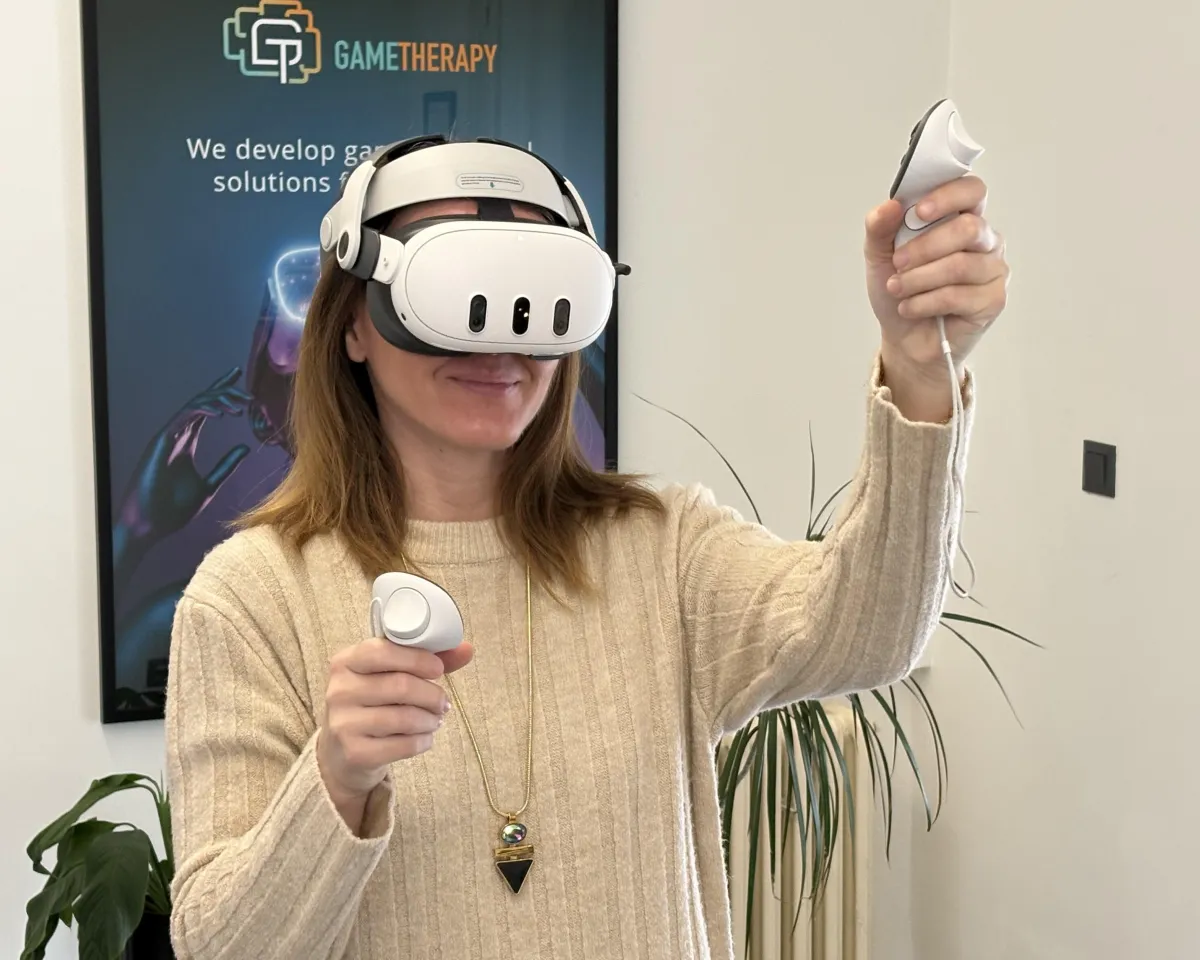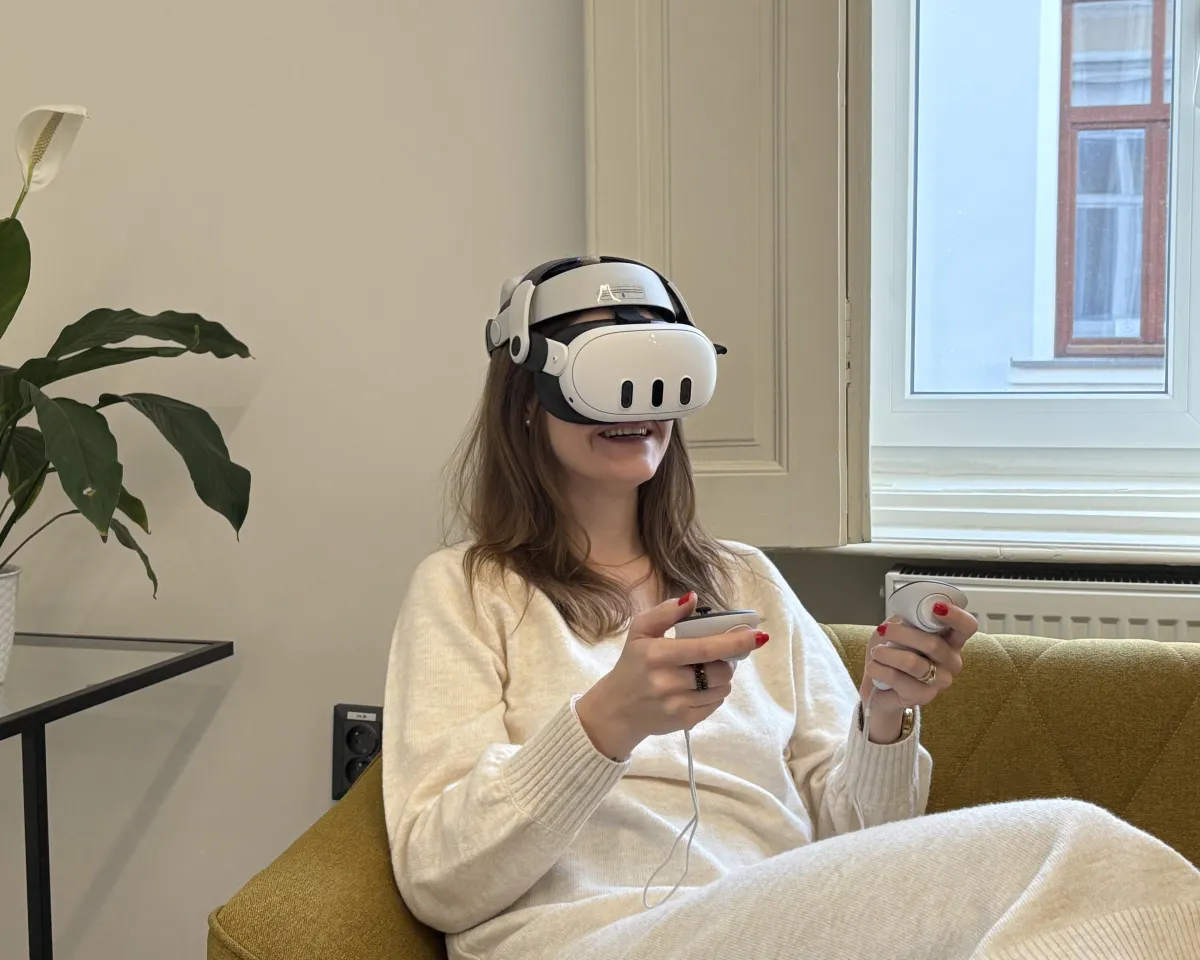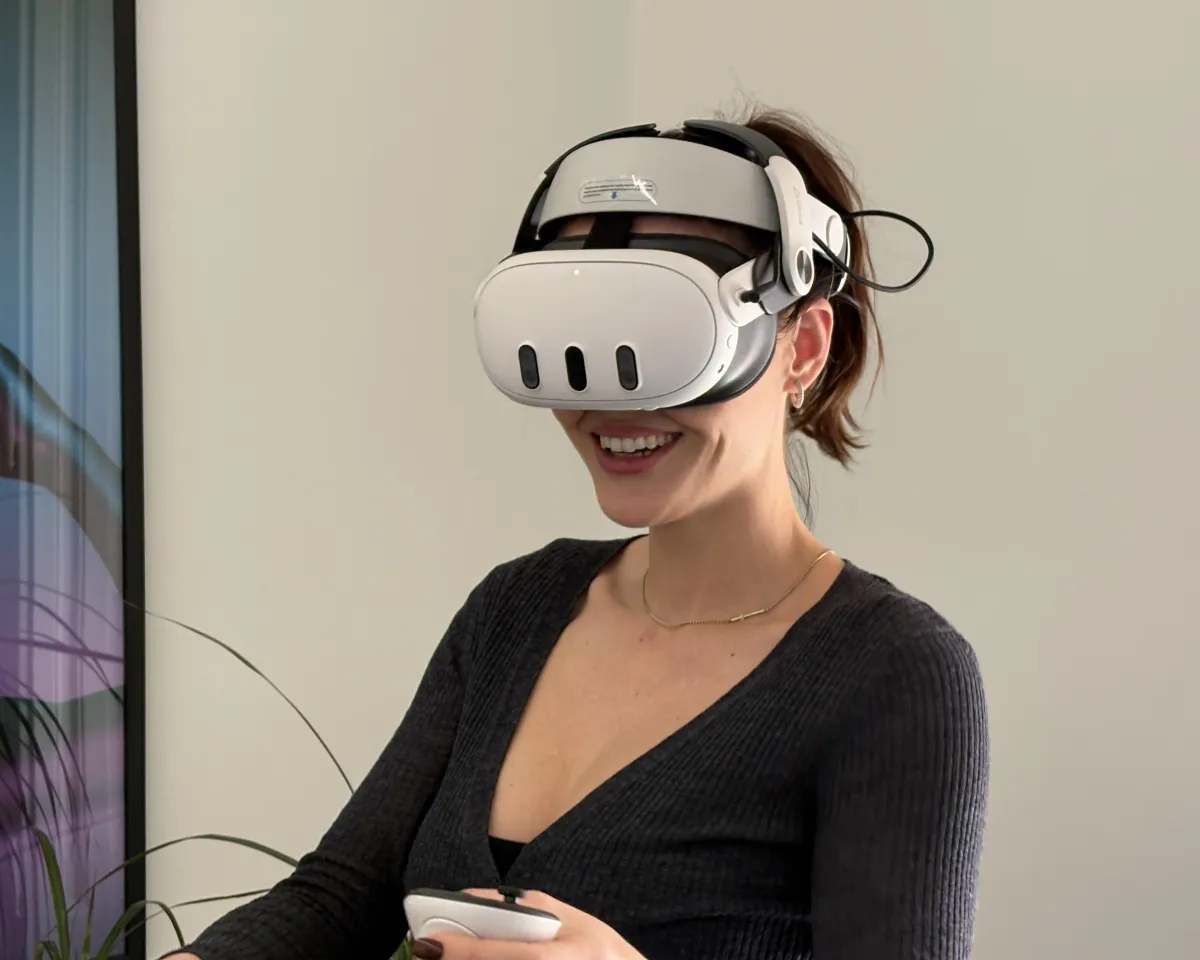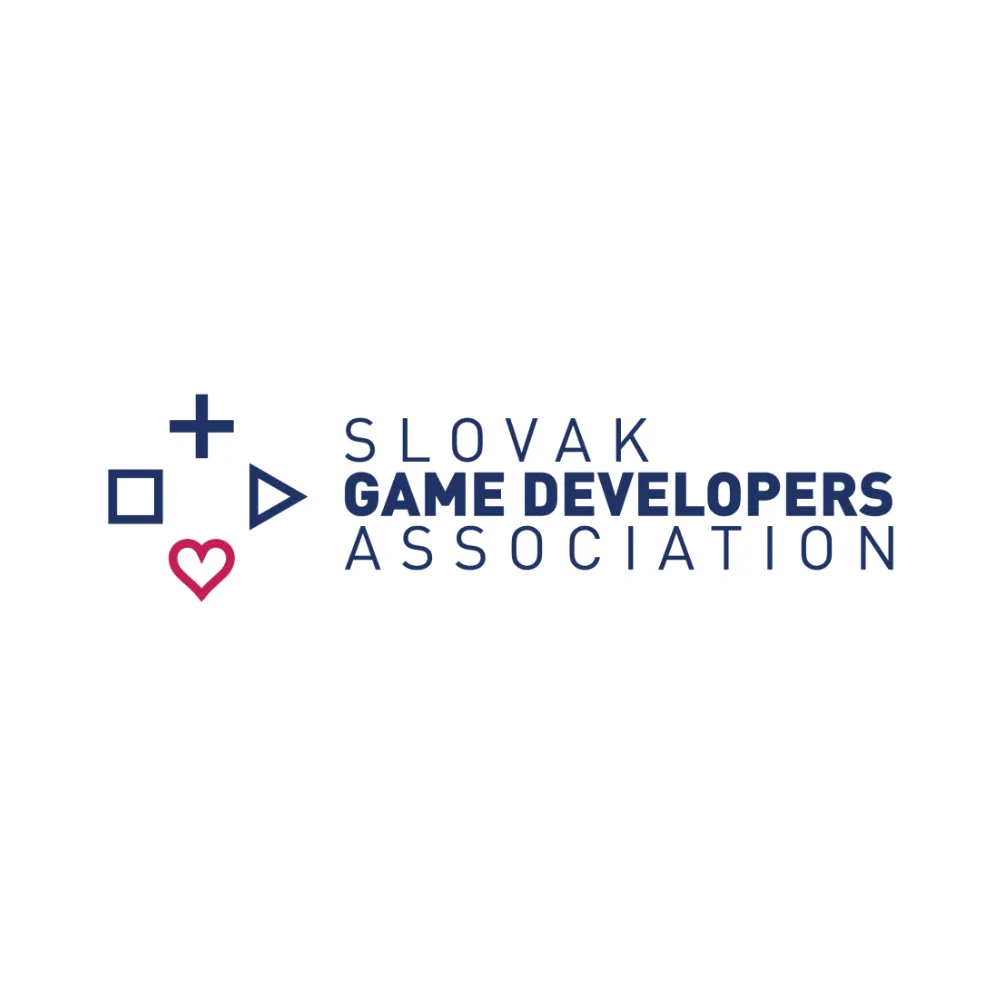BRIDGING RESEARCH, TECHNOLOGY, AND THE GAMING WORLD
Your partner in cutting-edge software development
Our mission is to transform human well-being and human-computer interaction. We do this by integrating virtual reality, augmented reality, and artificial intelligence technologies. At the heart of our philosophy is game-therapy. We create innovative, scientifically grounded, yet playful solutions for a wide range of challenges.

IMPACTFUL TOOLS FOR A BETTER QUALITY OF LIFE
Our products
ClaustrOFF
A game created with cutting-edge research to help you overcome fears in a safe, engaging, and effective way
NeuroBoostVR
Innovative exercises for seniors and others to improve motor skills, balance, and orientation with simple, effective activities
VIRADIA
Virtual Reality Platform for Early Diagnosis of Neurodegenerative Diseases, Revolutionizing Neurological Diagnostics
Experience the full power of VR for positive well-being
With a commitment to innovation and the transformative power of VR, we aim to make a lasting impact on mental health, education, industry, and personal growth, all grounded in scientific research and designed to enhance well-being worldwide.

GROWTH THROUGH INNOVATIONS
The GAMETHERAPY model
We harness the power of new technologies. By making care and training more accessible and tailored, we empower individuals and organizations to thrive. Rooted in scientific research, our innovative approach drives meaningful change, transforming mental health, education, healthcare, industry, and personal growth on a global scale.
SOLUTIONS THAT MAKE AN IMPACT
Immersive solutions for mental health and beyond
Our primary focus is on creating immersive applications that empower individuals to overcome challenges like anxiety, phobias, and neurological conditions. These solutions are designed to enhance well-being and unlock potential across various aspects of life, showcasing our expertise in innovative and impactful technologies.
Engaging VR/AR solutions for soft skills training
Evaluation in neurology and rehabilitation
General education
Personal development
Industrial training
Industry 5.0 applications

Join the Mind Heaven Community!
Be part of our journey to transform mental health care and well-being through innovation and gamification. By signing up, you’ll gain access to exclusive psychological content, enjoy discounts on our products, and stay updated with the latest news about our projects. You’ll also discover unique content like game stories and behind-the-scenes insights into our app development process. We value your ideas and feedback to make our games even better. Join us, become a co-creator, and help shape the future of the Mind Heaven Community!

The Connection Between Claustrophobia and Panic Attacks
The Connection Between Claustrophobia and Panic Attacks

"Understanding the link between claustrophobia and panic attacks is crucial. When you can recognize the triggers and symptoms, you take the first step toward managing them effectively." – Dr. Martin Polák
Claustrophobia and panic attacks often go hand in hand, creating a cycle of fear and intense physical reactions that can feel overwhelming. Claustrophobia, the fear of confined spaces, may trigger a panic attack when someone feels trapped, out of control, or unable to escape. Understanding this connection is essential for finding effective strategies to manage and break the cycle.
In this article, we’ll explore how claustrophobia leads to panic attacks, identify the symptoms, and discuss proven techniques to cope with and overcome these experiences.
What is Claustrophobia?
Claustrophobia is an intense fear of enclosed or crowded spaces. For many, it’s not the small space itself but the perception of being trapped or unable to escape that triggers anxiety. Common situations that provoke claustrophobia include:
Elevators
Crowded rooms or vehicles
Airplane cabins
MRI or CT scan machines
Symptoms of Claustrophobia
People with claustrophobia may experience both emotional and physical symptoms:
Emotional: Intense fear, dread, or a sense of losing control.
Physical: Rapid heartbeat, sweating, trembling, or dizziness.
What are Panic Attacks?
Panic attacks are sudden episodes of overwhelming fear or anxiety, often accompanied by severe physical symptoms. They can occur unexpectedly or be triggered by specific situations, such as entering a small, confined space.
Symptoms of a Panic Attack
A panic attack usually includes:
Shortness of breath or hyperventilation
Chest pain or tightness
Rapid heart rate (tachycardia)
A feeling of impending doom
Dizziness or lightheadedness
The Link Between Claustrophobia and Panic Attacks
1. Fear of Trapped Situations
For individuals with claustrophobia, the thought of being confined often triggers intense anxiety. If the fear escalates, it can lead to a full-blown panic attack.
2. Anticipatory Anxiety
Worrying about future encounters with confined spaces can create anticipatory anxiety, which increases the likelihood of experiencing panic attacks even before entering a feared situation.
3. Hyperawareness of Bodily Sensations
Claustrophobia often heightens sensitivity to physical sensations, such as shortness of breath or a racing heart. Misinterpreting these normal reactions as signs of danger can trigger a panic attack.
4. Vicious Cycle of Fear
When a panic attack occurs in a confined space, the experience reinforces the fear of similar situations. This cycle can make claustrophobia more severe over time.
How to Manage Claustrophobia and Panic Attacks
1. Recognize the Symptoms
Awareness is the first step to control. Learn to identify the signs of claustrophobia and panic attacks, so you can respond before the fear escalates.
2. Practice Controlled Breathing
Controlled breathing helps calm the nervous system and prevent hyperventilation, a common trigger for panic attacks.
How to do it: Inhale for 4 seconds, hold for 4 seconds, and exhale slowly for 6 seconds. Repeat until you feel calm.
3. Use Grounding Techniques
Grounding techniques help shift focus from fear to the present moment.
Example: Look around and name five things you can see, four things you can touch, three things you can hear, two things you can smell, and one thing you can taste.
4. Gradual Exposure Therapy
Avoidance reinforces fear. Gradual exposure to confined spaces, starting with less intimidating situations, can help desensitize your mind and body to triggers over time.
5. Challenge Negative Thoughts
Replace catastrophic thoughts like “I’ll suffocate” with rational alternatives such as “This space is safe, and I can leave anytime.”
6. Seek Professional Help
Cognitive Behavioral Therapy (CBT) and exposure therapy are effective treatments for claustrophobia and panic attacks. A trained therapist can help you break the cycle of fear and avoidance.
The Role of Technology in Treatment
Virtual Reality Therapy
Virtual Reality (VR) exposure therapy offers a safe, controlled environment to practice facing confined spaces.
Benefits: Customizable scenarios and the ability to pause or adjust the difficulty make VR a valuable tool in overcoming claustrophobia.
Apps for Anxiety Management
Apps like Calm or Headspace provide guided breathing and relaxation exercises to help manage panic symptoms on the go.
Breaking the Cycle: What You Can Do Today
Start small: Spend a few seconds in a confined space and gradually increase your time.
Use calming techniques like breathing and mindfulness during exposure.
Celebrate progress: Every small victory counts, whether it’s standing near an elevator or taking a short ride.
Scientific Insights into Claustrophobia and Panic Attacks
Research sheds light on the connection between claustrophobia and panic attacks:
Amygdala Hyperactivity: Studies show that individuals with claustrophobia have heightened activity in the amygdala, the brain's fear center (Journal of Anxiety Disorders, 2023).
CBT Effectiveness: A 2022 meta-analysis in Clinical Psychology Review found that CBT reduces panic symptoms in over 80% of cases.
VR Therapy Success: Research in Cyberpsychology, Behavior, and Social Networking (2023) highlights VR’s role in reducing claustrophobia symptoms by 75%.
Final Thoughts
Understanding the connection between claustrophobia and panic attacks is a vital step toward overcoming both. By recognizing triggers, practicing coping strategies, and seeking appropriate therapy, you can break the cycle of fear and regain control of your life. Remember, progress takes time, but each small step brings you closer to a calmer, more confident you.
References
Antony, M. M., & Swinson, R. P. (2023). Treatment of specific phobias and panic disorders. Journal of Anxiety Disorders.
Wiederhold, B. K., & Riva, G. (2022). Virtual reality therapy for anxiety: A modern approach. Cyberpsychology, Behavior, and Social Networking.
Hofmann, S. G., & Smits, J. A. J. (2022). Cognitive-behavioral strategies for managing panic attacks. Clinical Psychology Review.
Rachman, S. (2023). The interplay between phobias and panic: A clinical perspective. Annual Review of Psychology.






